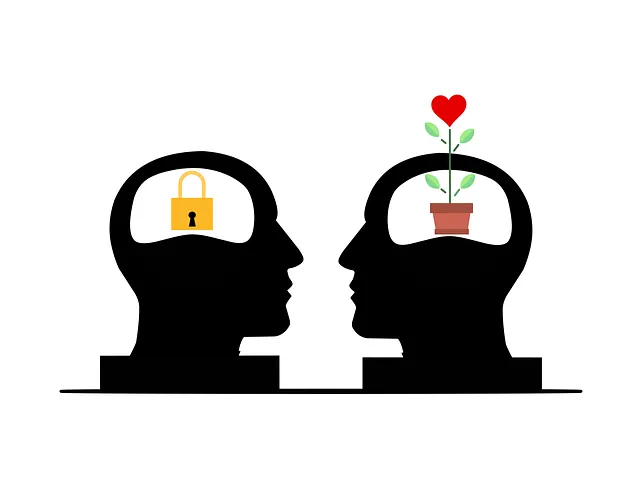Longmont Kaiser mental health programs have pioneered accessible solutions like mental wellness apps, offering easy therapy access, mood tracking, mindfulness exercises, and personalized recommendations. These apps, integrating evidence-based practices, facilitate open dialogue for risk planning and timely interventions. Key features include virtual peer support groups, depression prevention tools, stress management techniques, and secure data handling via robust technical infrastructure. Marketing focuses on understanding target audience needs, sharing insightful content, gamification, collaborations with influencers, and promoting personalized experiences to drive user growth and improve mental health outcomes.
Mental wellness apps are becoming essential tools in managing and improving our psychological well-being. With the increasing demand for accessible mental healthcare, this article explores the development of such apps, focusing on the effectiveness of Longmont Kaiser mental health programs as a blueprint. We’ll delve into key considerations: from understanding user needs to technical implementations and marketing strategies. By examining these aspects, we aim to highlight how well-designed apps can revolutionize mental health support.
- Understanding the Need for Mental Wellness Apps
- Designing Effective Longmont Kaiser Mental Health Programs
- Technical Considerations for App Development
- Marketing and User Engagement Strategies
Understanding the Need for Mental Wellness Apps

In today’s fast-paced world, mental wellness is a crucial aspect of overall health, and the need for accessible and effective support has never been more evident. Longmont Kaiser mental health programs have played a significant role in recognizing this growing demand, leading to the development of innovative solutions like mental wellness apps. These digital tools are designed to cater to the diverse needs of individuals seeking support for their mental well-being.
Mental wellness apps offer a range of benefits, from providing easy access to therapy and counseling services to enabling users to track their moods, practice mindfulness exercises, and receive personalized recommendations. With features like virtual peer support groups and depression prevention tools, these apps are transforming the way people manage their mental health. Moreover, effective communication strategies integrated into these platforms facilitate open dialogue between users and mental health professionals, ensuring better risk management planning and timely interventions.
Designing Effective Longmont Kaiser Mental Health Programs

When designing Longmont Kaiser mental health programs, it’s imperative to integrate evidence-based practices and innovative strategies tailored to diverse user needs. These programs should encompass a comprehensive approach, addressing various aspects of mental wellness, such as stress management, mood regulation, and cognitive reframing, incorporating techniques like mindfulness, meditation, and positive thinking. The effectiveness of Longmont Kaiser mental health programs can be significantly enhanced through regular risk assessment for mental health professionals, ensuring they are equipped to handle complex cases.
Additionally, implementing robust risk management planning for mental health professionals is crucial. This involves establishing protocols for identifying and mitigating potential risks associated with client care, including burnout prevention strategies and crisis intervention training. By fostering a culture of continuous improvement and emphasizing the well-being of both clients and professionals, Longmont Kaiser mental health programs can achieve better outcomes, promoting long-term positive thinking and resilience among users.
Technical Considerations for App Development

When developing a mental wellness app like those offering Longmont Kaiser mental health programs, technical considerations are paramount. The app’s architecture must be robust and scalable to handle sensitive user data securely and efficiently. Integration with existing healthcare systems is crucial for seamless information flow, enabling professionals to track patient progress effectively. Furthermore, the platform should support real-time updates and notifications for timely interventions, a key feature in encouraging adherence to coping skills development and resilience building programs.
Functionality should prioritize user experience, ensuring intuitive navigation and accessible content. Incorporating interactive elements that promote positive thinking can enhance engagement. Features like personalized dashboards, progress tracking, and integrated mindfulness exercises not only cater to individual needs but also facilitate ongoing mental wellness management. The app’s design must consider diverse user groups, incorporating accessibility features for those with visual or hearing impairments, thereby fostering an inclusive environment for all users.
Marketing and User Engagement Strategies

Marketing and user engagement strategies for a mental wellness app should be designed with a deep understanding of the target audience and their needs. Incorporating Longmont Kaiser’s mental health programs as a foundation, developers can create compelling content that resonates with users seeking mindfulness, stress management, and overall well-being improvements. Utilizing social media platforms to share Mental Wellness Journaling Exercise Guidance and Empathy Building Strategies can attract a younger demographic while establishing the app as an authoritative source of mental health support.
To retain users and foster engagement, the app should offer personalized experiences tailored to individual progress in Burnout Prevention. This could include gamification elements, achievements, and rewards for consistent use. Collaborating with influencers and mental health advocates can further amplify the app’s reach and credibility, driving organic growth and ensuring a steady stream of new users.
Mental wellness apps, such as those informed by Longmont Kaiser’s evidence-based programs, hold immense potential in reaching and supporting individuals seeking better mental health. By combining user-centered design, robust technical features, and targeted marketing strategies, developers can create engaging tools that effectively address diverse needs. This approach not only promotes individual well-being but also contributes to a broader cultural shift towards prioritizing mental health and fostering more resilient communities.






